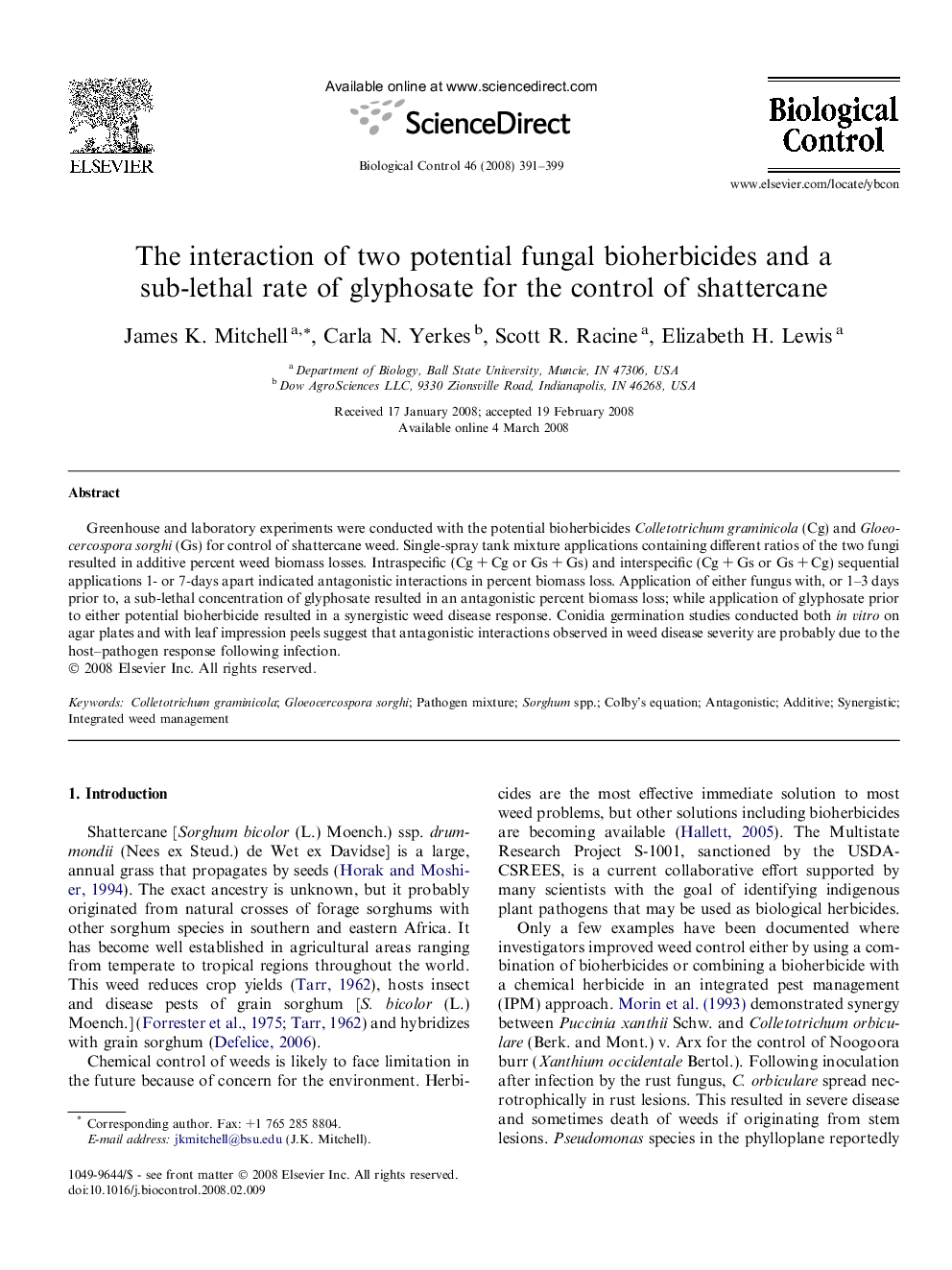| Article ID | Journal | Published Year | Pages | File Type |
|---|---|---|---|---|
| 4504811 | Biological Control | 2008 | 9 Pages |
Greenhouse and laboratory experiments were conducted with the potential bioherbicides Colletotrichum graminicola (Cg) and Gloeocercospora sorghi (Gs) for control of shattercane weed. Single-spray tank mixture applications containing different ratios of the two fungi resulted in additive percent weed biomass losses. Intraspecific (Cg + Cg or Gs + Gs) and interspecific (Cg + Gs or Gs + Cg) sequential applications 1- or 7-days apart indicated antagonistic interactions in percent biomass loss. Application of either fungus with, or 1–3 days prior to, a sub-lethal concentration of glyphosate resulted in an antagonistic percent biomass loss; while application of glyphosate prior to either potential bioherbicide resulted in a synergistic weed disease response. Conidia germination studies conducted both in vitro on agar plates and with leaf impression peels suggest that antagonistic interactions observed in weed disease severity are probably due to the host–pathogen response following infection.
